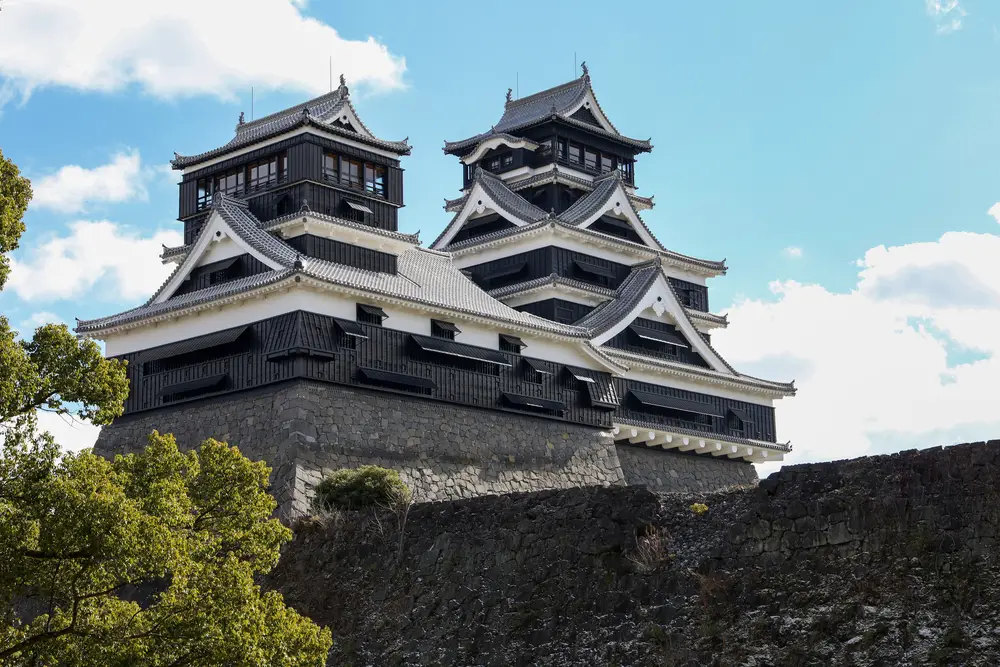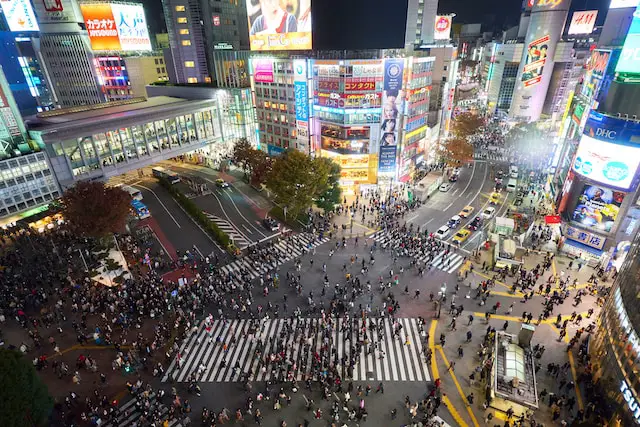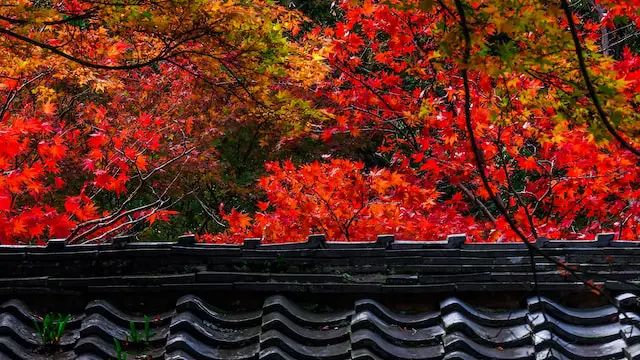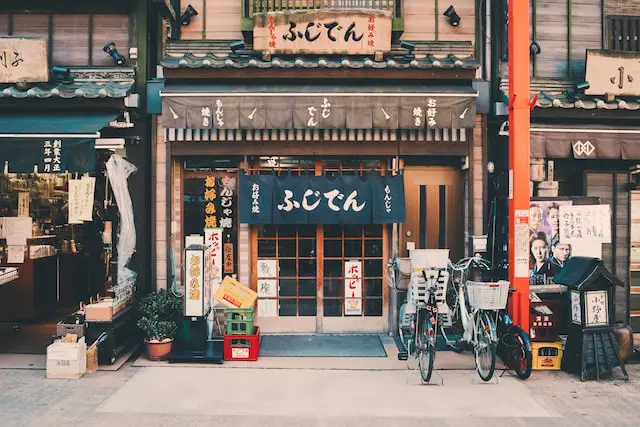The allure of Japan often conjures images of bursting neon lights in Tokyo or serene temples in Kyoto. However, journey beyond these mainstream tourist hotspots and you’ll find a completely different reality, brimming with raw beauty and untouched culture. Venturing into lesser-known cities will forever change your perception of Japanese tourism.
Enigmatic destinations like Nagoya, Fukuoka, and Sapporo offer a fascinating slice of life with distinct character, afar from conventional Japan travel itineraries. These remarkable cities promise a diverse collection of experiences that beautifully showcase the spirit of offbeat Japan.
Imagine strolling through Nagoya’s state-of-the-art industrial landscapes, feasting on Fukuoka’s eclectic street fare, or skiing down Sapporo’s snow-kissed slopes. They all paint an authentic picture of Japan seldom experienced by the habitual traveler.
Join us as we embark on an enchanting journey to these enchanting cities, exposing Japan’s best-kept secrets and presenting a compelling case for exploring the road less traveled.
While the bustling metropolises of Tokyo and Kyoto often steal the limelight when talking about Japan travel, the country is replete with countless other cities, each offering its own unique slice of Japanese culture and lifestyle. Among these hidden pearls are three exceptional cities – Nagoya, Fukuoka, and Sapporo.
Nagoya, often overlooked for its industrial image, sits conveniently between Tokyo and Kyoto. Being the fourth most populous city in Japan, Nagoya presents a plethora of urban attractions coupled with very valued traditional and historical sites. It’s a city where skyscrapers and manufacturing prowess coexist harmoniously with age-old traditions and historical landmarks.
Next on our list is Fukuoka, serving as the gateway to Kyushu Island, the southernmost of Japan’s main islands. This charming city has earned an outstanding reputation owing to its rich history, cherished temples, and, of course, its celebrated food scene, making it a favourite of gourmands worldwide.
Last, and certainly not least, we dive northwards to a city synonymous with its enchanting winter wonderland – Sapporo. Sapporo, famous for its annual Snow Festival, is the largest city on Hokkaido Island. Sweeping skylines contrast with historic sites, lush parks, and renowned ski resorts, offering a glimpse into the city’s vibrant culture and eclectic offerings.
These three cities, each unique in its own way, yet deeply interconnected with the rich tapestry of Japanese society, signify the broad spectrum of experiences Japan has to offer beyond the usual tourist hotspots. It’s time to step off the beaten track and explore the true essence of Japanese tourism.
The Industrial Elegance of Nagoya
When one thinks of Japan, it’s easy to focus solely on the vibrant energy of Tokyo or the historical beauty of Kyoto. However, tucked away in the Chubu region lies a truly unique destination.
An embodiment of modern Japan, Nagoya impressively merges the country’s industrial prowess with its deep-rooted traditions. Nestled between Tokyo and Osaka, this city pulsates with the rhythm of manufacturing, spearheaded by world-renowned automaker Toyota.
At the heart of Nagoya’s industrial backdrop stands the towering Nagoya TV Tower, lighting up the skyline and offering astounding panoramic views of the city. One can’t overlook the city’s modern marvels like the JR Central Towers which house one of the largest train stations in the world and an impressive collection of shopping and dining options.
The skyline reverberates with metallic structures that intertwine with historical monuments, creating an urban metropolis that both pays homage to its past and strides proudly towards the future. Observing this cityscape, dense with skyscrapers and factories, one can truly grasp Nagoya’s significant role in Japan’s economic fabric.
While Nagoya’s rich industrial history defines the cityscape, the human element within this steel environment tells an equally compelling story. The seamless fusion of past and present, technology and tradition are the hallmarks of Nagoya, making it an essential stop in a journey through Japan’s lesser-known cities.
Nagoya’s Cultural Highlights

When it comes to exploring Japanese culture beyond Tokyo and Kyoto, Nagoya often remains untrodden, yet it hosts a trove of enriching cultural experiences. An excellent place to begin your cultural exploration is the emblematic Nagoya Castle. This majestic structure, adorned with golden shachi-hoko (dolphin-like creatures), provides glimpses into Japan’s rich feudal history and offers panoramic city views.
For those with a keen interest in Japan’s impressive technological advancement, a visit to the Toyota Techno Museum is a must. It offers an in-depth understanding of the evolution of automotive technology, immersing visitors in Nagoya’s industrial heritage. You can even observe real car assembly lines in its factory tours, an experience exclusive to Nagoya.
Another notable cultural oasis is the Atsuta Shrine, one of the most sacred Shinto shrines in Japan. Veiled by centuries-old cypress trees, this serene sanctuary vibrates with a soul-soothing, spiritual atmosphere, a sharp contrast to the city’s bustling exterior.
Lastly, immerse yourself in the spirited cultural vibe of Nagoya at Osukanon Street, a popular shopping area. Here, you can hunt for beautiful Japanese antiques, savor local street food delicacies, and engage in the infectious energy of this vibrant alley.
From enduring castles and enlightening museums to tranquil shrines and lively streets, Nagoya’s cultural canvas paints a compelling picture of Japan’s past and present. When planning your Japanese journey, consider the cultural vibrancy of Nagoya for a unique and enriching experience.
Fukuoka, often referred to as the “Gateway to Kyushu,” is an ideal travel destination for those yearning for a taste of the unaffected charm of Japan. This captivating city, situated on Kyushu Island’s northern shore, has often played the role of a friendly gateway to Asia, both in historical and modern contexts.
Home to ancient temples, modern shopping centers, and tantalizing local cuisine, Fukuoka combines the allure of a bustling city with the tranquility of rural Japan. It’s no wonder that this hub has become increasingly popular among international and domestic tourists alike.
Experience first-hand the peaceful coexistence of tradition and modernity that defines Fukuoka. Visiting the ancient Kushida Shrine, tucked away in the midst of urban developments, tells the story of Fukuoka’s ability to maintain a splendid balance between past and present, which is a unique character trait not just observed in Fukuoka, but across the whole of Kyushu Island.
Whether you’re exploring Hakata, the city’s energetic historic district, or taking a leisurely stroll along the city’s picturesque port, you’ll be greeted by the inviting warmth of its inhabitants, the city decorated by a mix of tradition and modernity, and the delicious aroma of local cuisine emanating from street-side stalls; reminding you that Fukuoka, the “Gateway to Kyushu,” is truly a gateway to the authentic essence of Japan.
Unfolding Fukuoka’s Food Scene
If there’s one thing that stands out about Fukuoka, it’s the city’s reputation as a culinary paradise. Offering some of the finest flavours that Japan has to offer, Fukuoka’s food scene is undeniably vibrant and varied.
At the heart of the city’s gastronomy is Hakata ramen. Named after the Hakata district, this local delight is often characterized by its rich, milky, pork-bone tonkotsu broth and thin, chewy noodles. What makes it even more delightful is the way it is served. In Fukuoka, it’s all about the Yatai – mobile food stalls that come alive as night falls, serving up steaming bowls of ramen to locals and tourists alike.
Increasing your culinary palette, Fukuoka also offers a wide variety of fresh seafood dishes thanks to its optimal location near the sea. From sushi and sashimi to grilled fish and oysters, navigating the city’s seafood scene is an adventure itself. Plus, there’s the local favourite, Mentaiko (seasoned cod roe), a perfect blend of spice and umami that will bring your tastebuds to life.
Indeed, whether you’re a gastronomical adventurer or prefer more familiar fare, Fukuoka’s food culture is one you simply can’t miss. As the gateway to Kyushu, Fukuoka serves as a culinary gateway as well, indulging food enthusiasts in the authentic taste of Japanese cuisine beyond sushi and tempura.
Lose yourself in the dynamic city of Sapporo, known for its rich history, mesmerizing sights, and energy that perseveres through the snowy winters. Situated as the main city on the northernmost island of Hokkaido, Sapporo brings its own captivating charm to Japan.
The city boasts an enchanting array of attractions to fill your itinerary, but its jewel is undeniably the Sapporo Snow Festival. Held annually, this renowned event invites millions from around the world to witness a winter wonderland that transcends the ordinary. Majestic snow sculptures, some towering several meters high with intricate detail, illuminate the city, turning it into an awe-inspiring outdoor gallery.
Delve into Sapporo’s vibrant past at the Historic Village of Hokkaido or head to the Clock Tower for a glimpse of the city’s pioneer spirit. Don’t miss the views from the Sapporo TV Tower – with the glittering cityscape stretched beneath you, framed by snow-capped mountains and the glistening Sea of Japan, it’s a sight to behold.
After a day of exploration, ease into the vivacious nightlife. From fresh seafood dinners to the local favorite Sapporo beer at its birthplace, the city promises to leave a unique imprint on your taste buds. Sapporo is more than just a city—it’s a winter paradise waiting for you to discover .
In the heartland of Japan’s northern frontier of Hokkaido, the city of Sapporo unfolds an adventurous chapter of Japanese tourism. Famous for its Sapporo Snow Festival, Sapporo poses an unmatched appeal to nature lovers, sports enthusiasts, and anyone looking for an exhilarating outdoor experience.
The city’s snow-laden landscapes, sparkling in the winter sun, offer an absolute haven for skiing enthusiasts. From the sprawling Sapporo Teine, a legacy of the 1972 Winter Olympics, to the intimate charm of Moiwayama, Sapporo’s ski slopes cater to both beginners and seasoned skiers. As the city shivers under the snow, the hot springs or ‘Onsen’ scattered around provide a cozy retreat to unwind and rejuvenate. Noboribetsu Onsen and Jozankei Onsen are particularly popular for their healing properties.
However, Sapporo is not just a winter wonderland. As the snow melts away, the city transitions into a lush and vibrant tapestry of blooming flowers and green landscapes. The serene paths of the Maruyama Park or the rhythmic sway of lavender fields in Furano set the stage for delightful hiking experiences. The city’s hiking trails offer magnificent vistas of the cityscape, making your hike worthwhile.
Moreover, for those seeking a break from the bustling city life, the Okurayama Jump Ski viewing lounge provides an excellent lookout point with panoramic views of the city and its surroundings.
Come to Sapporo, where the snowy peaks beckon, the hot springs await, and the beauty of nature, both tame and wild, melds into a magnificent symphony for your outdoor adventure. Embrace the outdoors in Sapporo, and you’ll discover a different facet of Japan’s hidden gems.
Japan’s remarkable culture has unique manifestos in each city that enrich the visitor experience, transcending the homogeneity of glitzy mega-cities. We delve into the unseen cultural trove of Nagoya, Fukuoka, and Sapporo.
Nagoya: Festival Flamboyance
Nagoya, known for industrial sophistication and urban sprawl, boasts a vibrant festival culture, adding dynamic hues to its brief. The Nagoya Matsuri and Atsuta Matsuri are standout events, where majestic floats, traditional music, and dance parade the streets. These festivals evoke Nagoya’s historical narratives and community spirit that is a feast for the senses.
Fukuoka: Ancient Temples
Fukuoka, your silhouette of the serenity in Kyushu Island, shines with age-old temples illustrating the crossroads of the folkloric and ethereal. Kushida Shrine and Tochoji Temple are epitomes of the city’s religious fervor. Engaging in quiet contemplation or a temple visit in these divine sanctuaries reverberates with tranquility and spiritual enlightenment.
Sapporo: Link to the Lost Ainu Culture
The northernmost city of Sapporo beckons the culturally curious with its cherished link to the Ainu, an indigenous group with a rich lore rooted in nature worship. The Pirka Kotan Ainu Culture Promotion Center is a hub to decode the mysteries of Ainu history, crafts, and traditions, offering an ethereal time-travel experience that adds layers to Sapporo’s appeal.
Each city, embossed with distinctive, astounding cultural identities, unfolds tales of Japan’s diversity, awaiting to be explored by discerning travelers seeking more than conventional touristic experiences. #Japanese Unique Culture.
Conclusion
As we conclude our immersive journey through Nagoya, Fukuoka, and Sapporo, let’s appreciate the myriad and unique offerings these off-the-beaten-path gems present. Their multifaceted allure lies not merely in their fascinating landscapes, rich food culture, or vibrant festivities, but in the stories they tell and the genuine connection they offer to Japan’s stirring hues and myriad contradictions.
Nagoya, with its fusion of industrial elegance and cultured grace; Fukuoka, the warm and friendly gateway to the intriguing Kyushu Island, with a food scene that will enthral any gourmand; and Sapporo, a dynamic city that effortlessly merges urbanity with the natural world, are all brimming with unique experiences just waiting to be discovered.
So, as you plan your next Japan exploration, remember to consider these less-crowded, culturally enriching, and equally enticing destinations as exciting alternatives to the usual hotspots. Here’s your chance to embark on an adventure that takes you deeper into the heart of Nihon-no-Bunka – the culture of Japan. Sayōnara until then, fellow travelers!




